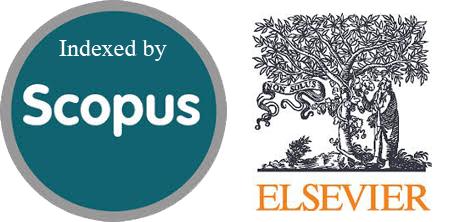Effect of Root Dentin Moisture on the Apical Sealing Ability of Root Canal Sealers: In vitro Study
DOI:
https://doi.org/10.54133/ajms.v8i2.1910الكلمات المفتاحية:
رطوبة العاج، استخلاص الصبغة، مادة حشو الجذر MTA Fillapex، مادة حشو الجذر One-filالملخص
التنزيلات
المراجع
Venghat S, Hegde M. Comparative evaluation of smear layer removal efficacy using qmix 2in1, chitosan, smear clear and glyde. Br J Med Medical Res. 2016;13:1-8. doi: 10.9734/BJMMR/2016/23185. DOI: https://doi.org/10.9734/BJMMR/2016/23185
Dasari L, Anwarullah A, Mandava J, Konagala R, Karumuri S, Chellapilla P. Influence of obturation technique on penetration depth and adaptation of a bioceramic root canal sealer. J Conserv Dent. 2020;23:505. doi: 10.4103/JCD.JCD_450_20. DOI: https://doi.org/10.4103/JCD.JCD_450_20
Li GH, Niu LN, Zhang W, Olsen M, De-Deus G, Eid AA, et al. Ability of new obturation materials to improve the seal of the root canal system: a review. Acta Biomater. 2014;10(3):1050-1063. doi: 10.1016/j.actbio.2013.11.015. DOI: https://doi.org/10.1016/j.actbio.2013.11.015
Vitti RP, Prati C, Silva EJ, Sinhoreti MA, Zanchi CH, de Souza e Silva MG, et al. Physical properties of MTA Fillapex sealer. J Endod. 2013;39(7):915-918. doi: 10.1016/j.joen.2013.04.015. DOI: https://doi.org/10.1016/j.joen.2013.04.015
Park MG, Kim IR, Kim HJ, Kwak SW, Kim HC. Physicochemical properties and cytocompatibility of newly developed calcium silicate-based sealers. Aust Endod J. 2021;47(3):512-519. doi: 10.1111/aej.12515. DOI: https://doi.org/10.1111/aej.12515
Nawar NN, Elashiry MM, El Banna A, Saber SM, Schäfer E. Ex-vivo evaluation of clinically-set hydraulic sealers used with different canal dryness protocols and obturation techniques: a randomized clinical trial. Clin Oral Investig. 2024;28(11):612. doi: 10.1007/s00784-024-06006-5. DOI: https://doi.org/10.1007/s00784-024-06006-5
Nagas E, Uyanik MO, Eymirli A, Cehreli ZC, Vallittu PK, Lassila LV, et al. Dentin moisture conditions affect the adhesion of root canal sealers. J Endod. 2012;38(2):240-244. doi: 10.1016/j.joen.2011.09.027. DOI: https://doi.org/10.1016/j.joen.2011.09.027
Taşdemir T, Er K, Çelik D, Tahan E, Serper A, Ceyhanli KT, et al. Bond strength of calcium silicate-based sealers to dentine dried with different techniques. Med Princ Pract. 2014;23(4):373-376. doi: 10.1159/000362619. DOI: https://doi.org/10.1159/000362619
Kapur I, Malhotra A, Makkar S, Galyan G, Kumar M, Aggarwal A. Effect of distinctive moisture conditions on push-out bond strength of three root canal sealers-an in-vitro study. J Int Soc Prev Commun Dent. 2019;9(5):492-498. doi: 10.4103/jispcd.JISPCD_240_19. DOI: https://doi.org/10.4103/jispcd.JISPCD_240_19
Khurana N, Chourasia HR, Singh G, Mansoori K, Nigam AS, Jangra B. Effect of drying protocols on the bond strength of bioceramic, mta and resin-based sealer obturated teeth. Int J Clin Pediatr Dent. 2019;12(1):33-36. doi: 10.5005/jp-journals-10005-1589. DOI: https://doi.org/10.5005/jp-journals-10005-1589
Frasquetti KS, Piasecki L, Kowalczuck A, Carneiro E, Westphalen VPD, Neto U. Effect of different root canal drying protocols on the bond strength of two bioceramic sealers. Eur J Dent. 2023;17(4):1229-1234. doi: 10.1055/s-0042-1758807. DOI: https://doi.org/10.1055/s-0042-1758807
Wang JS, Bai W, Wang Y, Liang YH. Effect of different dentin moisture on the push-out strength of bioceramic root
canal sealer. J Dent Sci. 2023;18(1):129-134. doi: 10.1016/j.jds.2022.06.025. DOI: https://doi.org/10.1016/j.jds.2022.06.025
Roggendorf MJ, Ebert J, Petschelt A, Frankenberger R. Influence of moisture on the apical seal of root canal fillings with five different types of sealer. J Endod. 2007;33(1):31-33. doi: 10.1016/j.joen.2006.07.006. DOI: https://doi.org/10.1016/j.joen.2006.07.006
Jang JA, Kim HL, Her MJ, Lee KW, Yu MK. Effect of moisture on sealing ability of root canal filling with different types of sealer through the glucose penetration model. Restor Dent Endod. 2010;35. doi: 10.5395/JKACD.2010.35.5.335. DOI: https://doi.org/10.5395/JKACD.2010.35.5.335
Yanpiset K, Banomyong D, Chotvorrarak K, Srisatjaluk R. Bacterial leakage and micro-computed tomography evaluation in round-shaped canals obturated with bioceramic cone and sealer using matched single cone technique. Restor Dent Endod. 2018;43. doi: 10.5395/rde.2018.43.e30. DOI: https://doi.org/10.5395/rde.2018.43.e30
Mohammed HK, Abd-alla MH. The effect of ultrasonic activation of two different sealers on the fracture resistance of obturated root canals. Indian J Forens Med Toxicol. 2021;15(1). doi: 10.37506/ijfmt.v15i1.13796. DOI: https://doi.org/10.37506/ijfmt.v15i1.13796
Hussein ER, BM SS, Ibrahim RH. The effect of chitosan nanoparticle, citric acid, and ethylenediaminetetraacetic acid on dentin smear layer using two different irrigation needles: A scanning electron microscope study. J Conserv Dent. 2022;25(4):431-435. doi: 10.4103/jcd.jcd_178_22. DOI: https://doi.org/10.4103/jcd.jcd_178_22
Naji AN, Al-Gharrawi HA. Comparison of the sealing ability of guttaflow bioseal with different obturation systems (an in vitro study). J Int Dent Med Res. 2020;13(4):1632-1636.
Marciano MA, Ordinola-Zapata R, Cunha TV, Duarte MA, Cavenago BC, Garcia RB, et al. Analysis of four gutta-percha techniques used to fill mesial root canals of mandibular molars. Int Endod J. 2011;44(4):321-329. doi: 10.1111/j.1365-2591.2010.01832. DOI: https://doi.org/10.1111/j.1365-2591.2010.01832.x
Ozlek E, Gündüz H, Akkol E, Neelakantan P. Dentin moisture conditions strongly influence its interactions with bioactive root canal sealers. Restor Dent Endod. 2020;45(2):e24. doi: 10.5395/rde.2020.45.e24. DOI: https://doi.org/10.5395/rde.2020.45.e24
Razmi H, Bolhari B, Karamzadeh Dashti N, Fazlyab M. The effect of canal dryness on bond strength of bioceramic and epoxy-resin sealers after irrigation with sodium hypochlorite or chlorhexidine. Iran Endod J. 2016;11(2):129-133. doi: 10.7508/iej.2016.02.011.
Nepal M, Shubham S, Tripathi R, Khadka J, Kunwar D, Gautam V, et al. Spectrophotometric analysis evaluating apical microleakage in retrograde filling using GIC, MTA and biodentine: an in-vitro study. BMC Oral Health. 2020;20(1):37. doi: 10.1186/s12903-020-1025-9. DOI: https://doi.org/10.1186/s12903-020-1025-9
Jafari F, Jafari S. Composition and physicochemical properties of calcium silicate based sealers: A review article. J Clin Exp Dent. 2017;9(10):e1249-e1255. doi: 10.4317/jced.54103. DOI: https://doi.org/10.4317/jced.54103
Koo J, Kwak SW, Kim HC. Differences in setting time of calcium silicate-based sealers under different test conditions. J Dent Sci. 2023;18(3):1042-1046. doi: 10.1016/j.jds.2022.11.029. DOI: https://doi.org/10.1016/j.jds.2022.11.029
Zmener O, Pameijer CH, Serrano SA, Vidueira M, Macchi RL. Significance of moist root canal dentin with the use of methacrylate-based endodontic sealers: an in vitro coronal dye leakage study. J Endod. 2008;34(1):76-79. doi: 10.1016/j.joen.2007.10.012. DOI: https://doi.org/10.1016/j.joen.2007.10.012
Tuncel B, Nagas E, Cehreli Z, Uyanik O, Vallittu P, Lassila L. Effect of endodontic chelating solutions on the bond strength of endodontic sealers. Braz Oral Res. 2015;29. doi: 10.1590/1807-3107BOR-2015.vol29.0059. DOI: https://doi.org/10.1590/1807-3107BOR-2015.vol29.0059
Dem K, Wu Y, Kaminga AC, Dai Z, Cao X, Zhu B. The push out bond strength of polydimethylsiloxane endodontic sealers to dentin. BMC Oral Health. 2019;19(1):181. doi: 10.1186/s12903-019-0867-5. DOI: https://doi.org/10.1186/s12903-019-0867-5
Marques Ferreira M, Martinho JP, Duarte I, Mendonça D, Craveiro AC, Botelho MF, et al. Evaluation of the sealing ability and bond strength of two endodontic root canal sealers: an in vitro study. Dent J. 2022;10(11). doi: 10.3390/dj10110201. DOI: https://doi.org/10.3390/dj10110201
Gancedo-Caravia L, Garcia-Barbero E. Influence of humidity and setting time on the push-out strength of mineral trioxide aggregate obturations. J Endod. 2006;32(9):894-896. doi: 10.1016/j.joen.2006.03.004. DOI: https://doi.org/10.1016/j.joen.2006.03.004
Silva EJ, Carvalho NK, Prado MC, Zanon M, Senna PM, Souza EM, et al. Push-out bond strength of injectable pozzolan-based root canal sealer. J Endod. 2016;42(11):1656-1659. doi: 10.1016/j.joen.2016.08.009. DOI: https://doi.org/10.1016/j.joen.2016.08.009
Vitti RP, Prati C, Sinhoreti MA, Zanchi CH, Souza ESMG, Ogliari FA, et al. Chemical-physical properties of experimental root canal sealers based on butyl ethylene glycol disalicylate and MTA. Dent Mater. 2013;29(12):1287-1294. doi: 10.1016/j.dental.2013.10.002. DOI: https://doi.org/10.1016/j.dental.2013.10.002
Ehsani M, Dehghani A, Abesi F, Khafri S, Ghadiri Dehkordi S. Evaluation of apical micro-leakage of different endodontic sealers in the presence and absence of moisture. J Dent Res Dent Clin Dent Prospect. 2014;8(3):125-129. doi: 10.5681/joddd.2014.023.
Paula AC, Brito-Júnior M, Araújo CC, Sousa-Neto MD, Cruz-Filho AM. Drying protocol influence on the bond strength and apical sealing of three different endodontic sealers. Braz Oral Res. 2016;30(1). doi: 10.1590/1807-3107BOR-2016.vol30.0050. DOI: https://doi.org/10.1590/1807-3107BOR-2016.vol30.0050
Zhou HM, Shen Y, Zheng W, Li L, Zheng YF, Haapasalo M. Physical properties of 5 root canal sealers. J Endod. 2013;39(10):1281-1286. doi: 10.1016/j.joen.2013.06.012. DOI: https://doi.org/10.1016/j.joen.2013.06.012
McMichael GE, Primus CM, Opperman LA. Dentinal tubule penetration of tricalcium silicate sealers. J Endod. 2016;42(4):632-636. doi: 10.1016/j.joen.2015.12.012. DOI: https://doi.org/10.1016/j.joen.2015.12.012
Donnermeyer D, Bürklein S, Dammaschke T, Schäfer E. Endodontic sealers based on calcium silicates: a systematic review. Odontology. 2019;107(4):421-36. doi: 10.1007/s10266-018-0400-3. DOI: https://doi.org/10.1007/s10266-018-0400-3
Atmeh AR, Chong EZ, Richard G, Festy F, Watson TF. Dentin-cement interfacial interaction: calcium silicates and polyalkenoates. J Dent Res. 2012;91(5):454-459. doi: 10.1177/0022034512443068. DOI: https://doi.org/10.1177/0022034512443068
Dabaj P, Kalender A, Unverdi Eldeniz A. Push-out bond strength and SEM evaluation in roots filled with two different techniques using new and conventional sealers. Materials (Basel). 2018;11(9). doi: 10.3390/ma11091620. DOI: https://doi.org/10.3390/ma11091620

التنزيلات
منشور
كيفية الاقتباس
إصدار
القسم
الرخصة
الحقوق الفكرية (c) 2025 Al-Rafidain Journal of Medical Sciences

هذا العمل مرخص بموجب Creative Commons Attribution-NonCommercial-ShareAlike 4.0 International License.
Published by Al-Rafidain University College. This is an open access journal issued under the CC BY-NC-SA 4.0 license (https://creativecommons.org/licenses/by-nc-sa/4.0/).










